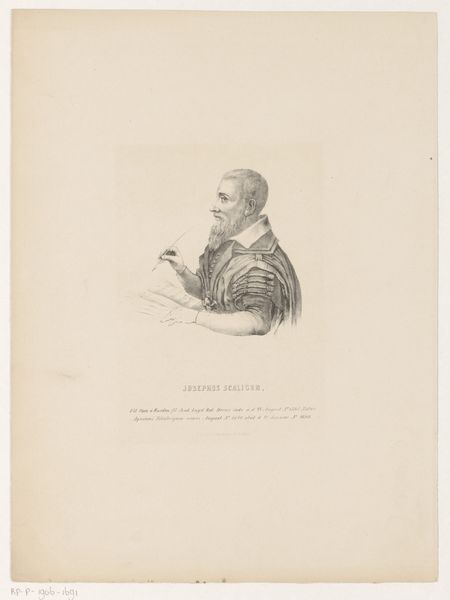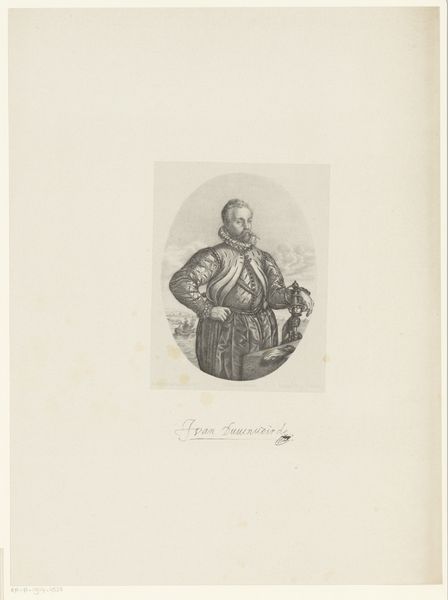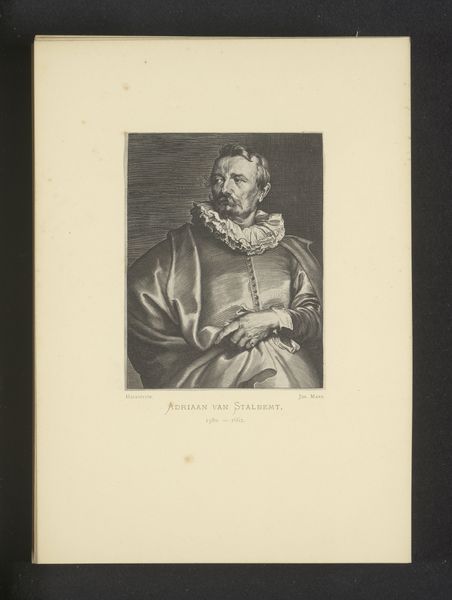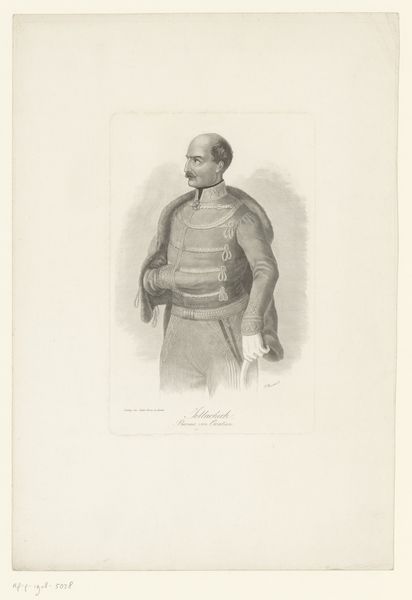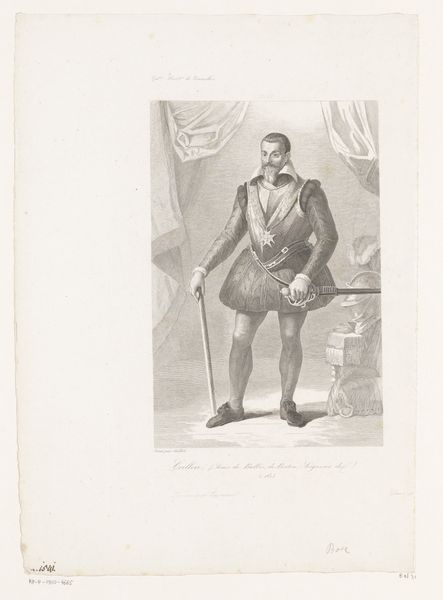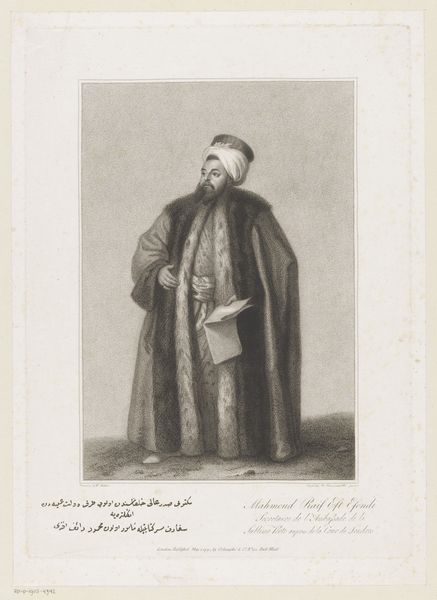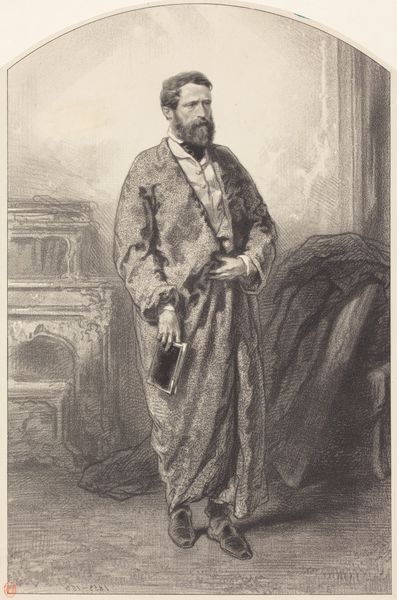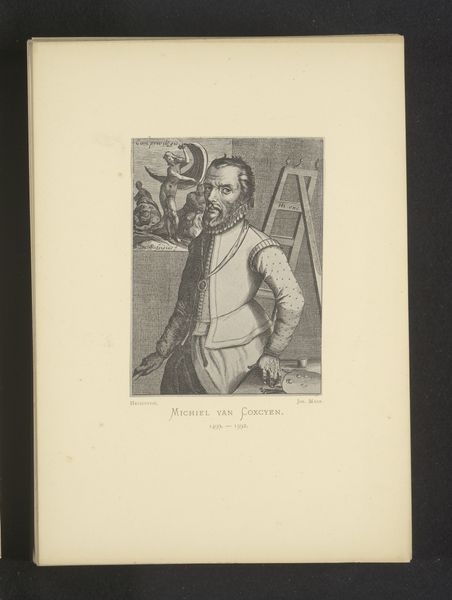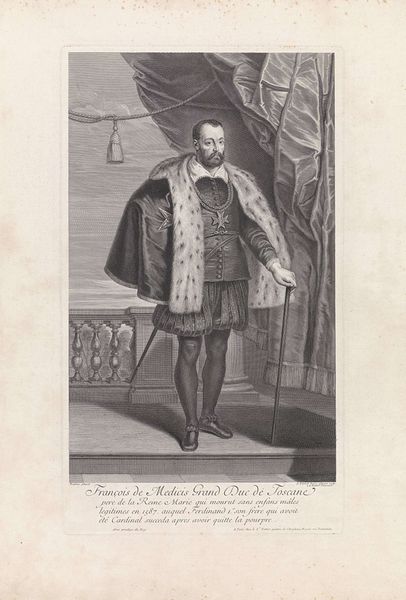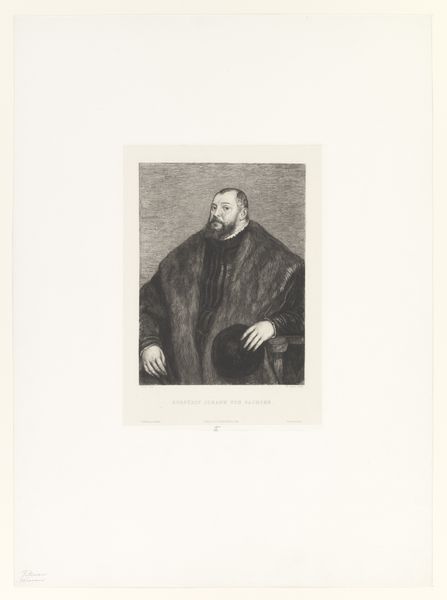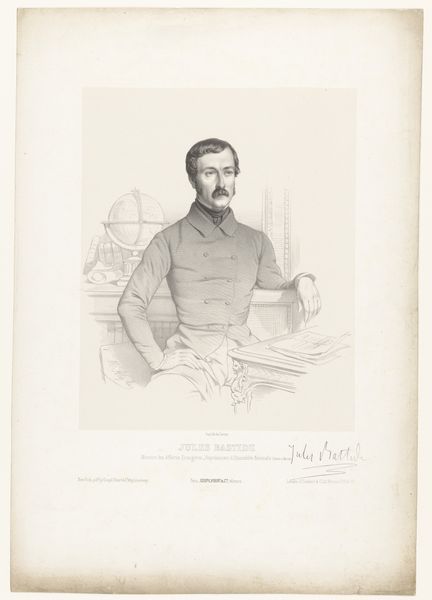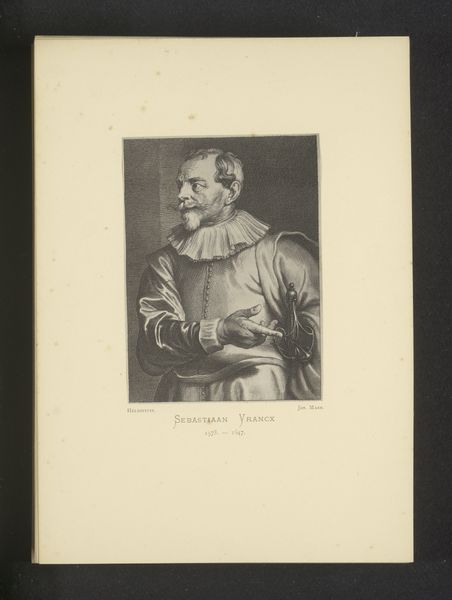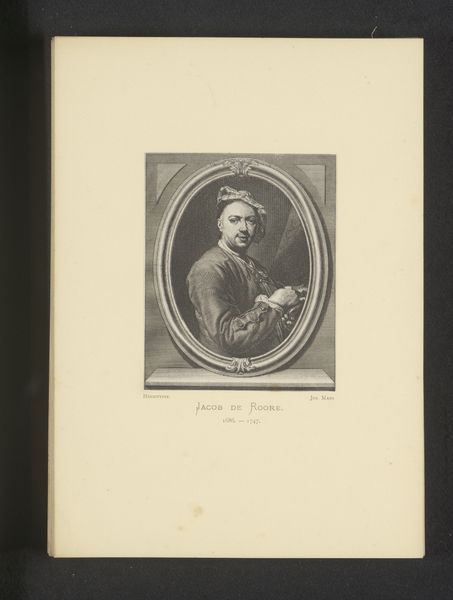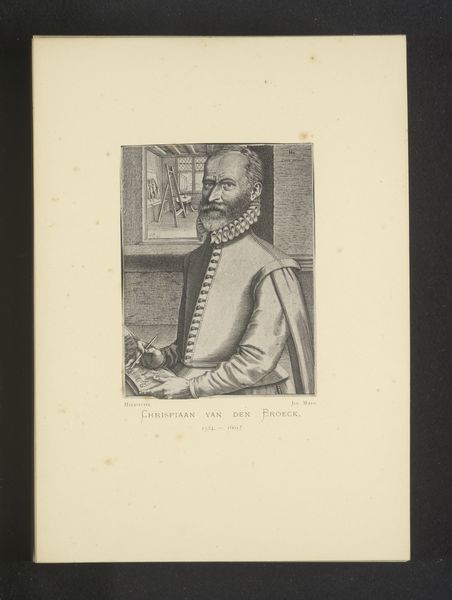
print, engraving
#
portrait
# print
#
old engraving style
#
figuration
#
line
#
history-painting
#
academic-art
#
engraving
#
realism
Dimensions: height 364 mm, width 253 mm
Copyright: Rijks Museum: Open Domain
Curator: This engraving from 1838 to 1841 is entitled "Portret van Louis de Luxembourg-Saint Pol" and was created by Louis Gustave Thibault. What’s your immediate take? Editor: There’s a certain somberness to it, wouldn't you agree? The figure looks regal, but slightly melancholic, almost burdened by his status. Curator: That’s interesting, given the political context. Louis de Luxembourg lived in a time of enormous political unrest. Considering how social and political narratives influenced art, is it perhaps the intention to show the man as a noble being weighted down by political struggles? Editor: Precisely! The choice to depict him in partial armor adds a fascinating layer. It speaks of a leader, someone involved in war, conflict, and violence, while at the same time reminding me that displays of nobility are often constructed in response to these forces. Curator: Right, it's performative. And look at his garments, such intricate detailing! It emphasizes status and power. How does the medium influence our interpretation? Editor: The line work in the engraving lends it an air of formality and a slight austerity. It reflects an attention to detail, sure, but doesn't capture warmth, don't you think? Considering our modern interpretation, this rigidity also reinforces our cultural associations with hierarchies and elitism. Curator: It certainly directs our eye to the symbols of power and what they mean. This type of art became public to share this vision, and it reflects not just a personal portrait but also broader ideological claims and the institution of nobility at that moment. How relevant are these images today when considering the issues of identity? Editor: I think that considering issues of historical and ongoing coloniality, we can examine the use of these art styles for potentially nationalistic imagery, looking specifically at the construction of a male "hero" and all its racial, political and cultural consequences. Curator: A valuable point. Thanks for unpacking the socio-political implications and helping us to view it through a wider lens! Editor: Always! It's essential to consider not just the aesthetic but also the powerful social and political narratives behind such a regal, serious artwork.
Comments
No comments
Be the first to comment and join the conversation on the ultimate creative platform.
